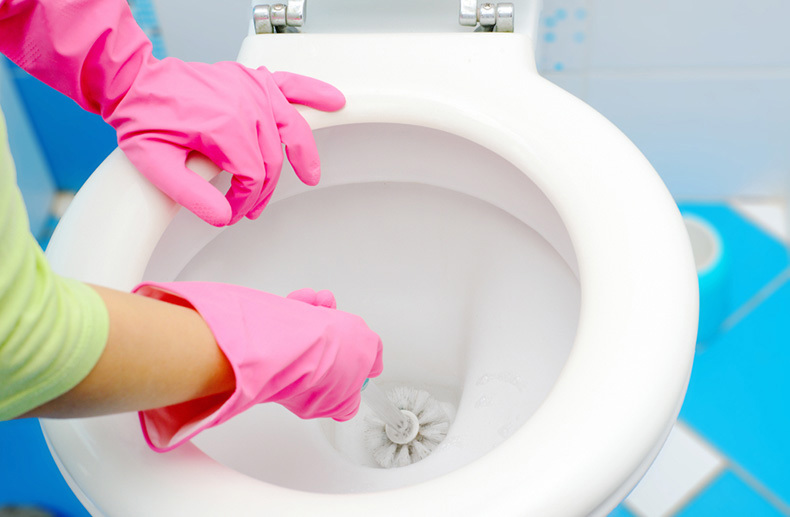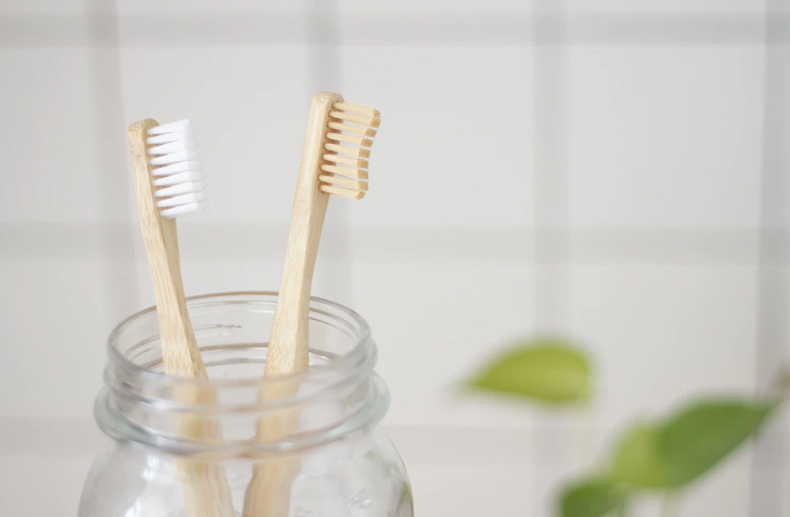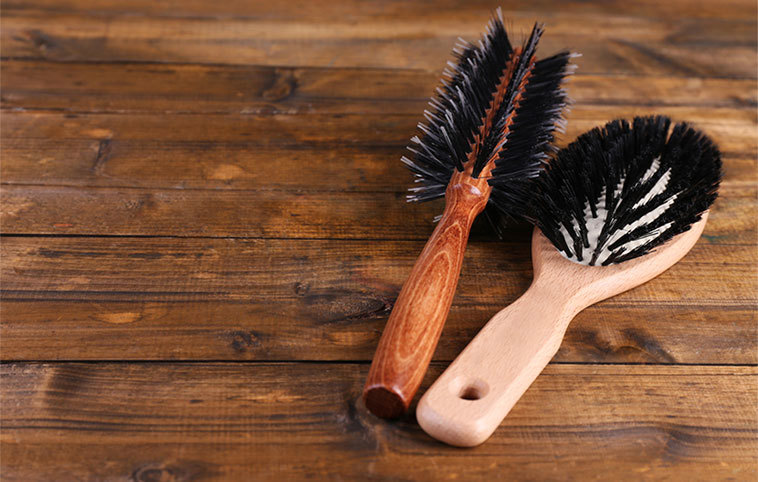Our bathrooms are intended to be a place of hygiene - it is after all where we take most care of our own - so it shouldn’t be an area that hosts hidden grime and bacteria.
However, as the bathroom is the second most used in the home (after the kitchen), the contents inside can quickly become overused. Add to that a naturally damp and warm atmosphere, and you don't have the best environment if you want to keep germs at bay.
So, how do we keep on top of bathroom grime? To find out more, we’ve used our own expertise as well as enlisting the help of Henry Paterson, Senior Operations Executive at Housekeep, to reveal how often we should be cleaning and replacing every item in our bathrooms.
Revealed: How Often You Should Clean and Replace Everything in Your Bathroom
|
Item |
When to Wash |
When to Replace |
|
Towels |
Every 3 Uses |
Every 1 to 3 Years |
|
Bath Mat |
Every 3 to 7 Days |
Every 2 Years |
|
Toilet Brush |
Every 7 Days |
Every 6 Months |
|
Shower Head |
Every 7 Days |
Every 3-5 years |
|
Shower Curtain |
Every Month |
Every 6 Months |
|
Loofah |
Every 7 Days |
Every 1 to 2 Months |
|
Toothbrush |
- |
Every 1 to 3 Months |
|
Disposable Razors |
- |
Every 1 to 3 Weeks |
|
Hairbrush |
Every Month |
Every 6 to 12 Months |
1. Time to Throw in the Towel
Towels- wash every 3 uses, replace every 1 to 3 years
Has your mother or partner ever pestered you whenever you’ve left a wet towel bunched up somewhere it’s not supposed to be, or maybe you’re the one doing the nagging? Well, it appears you or they might have had a point.
Towels that aren’t left to dry properly can be a perfect breeding ground for bacteria.
Henry Paterson, Senior Operations Executive at house cleaning service, Housekeep, advises: “To keep towels hygienic, make sure that they’re hung up to dry fully after each use, preferably in a non-humid environment. Hang them over a radiator or a towel rack, and definitely don’t leave them in a heap on the floor!”
Dirty towels can spread viruses, fungi and bacteria leading to skin infections such as staph. Our own research has even found bath towels can contain faecal matter - yuck! That’s why it’s best to wash your towel after every three uses.
Paterson adds: “Wash on a 40-degree wash with your usual laundry detergent, and then hang them to fully dry before you use them.”
Many of us keep towels for years, but unfortunately, they may be home to unseen germs and bacteria, no matter how well we take care of them. So, in general, it’s best to replace your towels every three years. However, if the towel doesn’t absorb properly or has an unpleasant odour, it’s time to throw in the towel sooner – no pun intended.
2. Your Bath Mat Sits on the Germiest Place in the Bathroom
Bath Mat - wash every 3 to 7 days, replace every 2 years
Bath Mats are trodden on daily with shoes and feet, not to mention they’re against the floor soaking wet and not being aired properly. What's more, studies have found that bathroom floors are the germiest areas in the bathroom, so it’s quite clear these germy mats should be washed regularly.
Henry Paterson adds: “Much like towels you should wash bath mats every few days as well - or at the very least once a week. These need to be washed at 40-degrees along with your usual laundry powder or liquid. It’s definitely worth investing in a second bath mat so that you can regularly rotate and keep them fresh.”
For bath mats with a rubber backing, it’s best to spray these weekly with white vinegar, and then wash in cold water every three to four weeks. This prevents bacteria build-up without damaging the rubber on your mat.

3. You Could Be Cleaning your Toilet with a Horde of Bacteria
Toilet Brush - wash every 7 days, replace every 6 months
Toilet brushes are used to keep your toilet clean. But all that bacteria you’ve scrubbed away from the toilet is now thriving on your brush.
Whenever you use a toilet brush, you should rinse it with the water from the flush. Then let the brush air dry by closing the toilet lid and letting it drip into the bowl. However, to wash the toilet brush: soak it in a mixture of boiling water and bleach, then let it drip dry once a week.
As these toilet brushes can be riddled with germs, it’s best to replace them every six months so you don’t just spread germs around the toilet bowl every time you scrub. Although, you can get more longevity out of a silicone toilet brush as the bacteria doesn’t get caught up in the bristles.

4. Are You Being Showered in Germs?
Shower Head - clean every week, replace every 1 - 5 years
Showers are used to cleanse our bodies of dirt and grime, but our shower heads can be a hotbed of germs. A study by the University of Colorado Boulder found that warm and wet conditions lead shower heads to develop biofilm. This is a collection of bacteria and fungi. Then every time we shower, the hot water disperses this scum into the air.
But, one good thing the study noted is that metal showerheads appear to be more resilient to germs, compared to plastic counterparts.
No matter which type of shower head you have, it’s best to clean them every week. Henry Paterson advises: “Spray the shower head with a bathroom cleaning spray, or a multi-surface spray, and a clean, damp microfibre cloth. Then wash away any suds and wipe again with a dry cloth.”
Each month, you can give the showerhead a deep clean with the bag and white vinegar method.
Shower heads build up sediment from tap water, alongside bacteria and mould. For this reason, it’s recommended to change your shower head every 1 to 5 years, however, the better care you take, the longer it will last!
5. Clean Your Shower Curtain Every Month to Keep Germs at Bay
Shower Curtain - wash every month, replace every 6 months
We often look forward to a long shower at the end of the day, or an energizing shower in the morning. But, what you might not be expecting is to be sharing your shower with bacteria, thanks to a germy shower curtain.
Is a shower curtain really that dirty? Well, it gets wet daily and then many of us scrunch it up, so water is sitting there all day long – perfect for breeding bacteria and mould.
To ensure you’re not inviting bacteria into your home, wash the shower curtain every month and replace it every six months. Spreading the shower curtain out after use prevents mould from growing and helps prolong the curtain.
You can simply place a plastic shower curtain in the washing machine on a 40-degree cycle, advises Paterson. He recommends: “Add in a couple of clean towels to protect the curtain, and provide some friction while the curtain washes.”
Fabric shower curtains can be placed in the washing machine, too. Just remember to check the label for specific instructions.
6. Are You Cleaning with a Germ-Filled Loofah?
Loofah - wash every week, replace every 1 to 3 months
Are you washing with a germ-ridden sponge? Well, you could be if you haven’t washed it in a while, or even in a week. Loofahs are prone to germs, as dead skin cells get stuck in the nooks after each use. Then they’re kept in a moist and humid environment, which is a haven for bacteria.
Not only that, but the Journal of Clinical Microbiology discovered that if you use this germy sponge on fresh-shaven skin, the bacteria can get into any cuts, risking irritation and infections.
To wash your loofah, soak it in a diluted bleach solution and then rinse every week. But, when is it time to ditch the loofah all together and get a new one? A tell-tale sign your loofah is past its sell-by date is if it has mould or starts to smell musty. Or to be on the safe side, you can replace it every month for a natural loofah and every 2 months for a plastic one.

7. The Average Toothbrush is Riddled with 10 Million Bacteria
Toothbrush - replace every 1 to 3 months
Did you know that the average toothbrush contains 10 million bacteria, such as E.coli and staph? So, it’s a good idea to keep on top of dental hygiene by discarding toothbrushes regularly.
Public Health England recommends replacing your toothbrush or toothbrush head every one to three months to prevent bacteria from building up on the bristles. But, if you have been sick you should replace your toothbrush after to minimise the growth of bacteria.
Don’t like the thought of throwing out toothbrushes? Why not clean up the brush and use it for cleaning grout in the bathroom? Or it can even be used as a nail brush.
8. Dirty Disposable Razors Can Lead to Warts and Infections
Disposable Razors – Replace every 1 to 3 weeks
How long can you use that disposable razor that’s withering in your bathroom? Studies have found a disposable razor can hold as much as a whopping 5 million colony-forming units of bacteria. In comparison, a typical household object, such as microwave buttons or a computer mouse, often includes 50 colony-forming units of bacteria.
Razor blades are exposed to bacteria and mould from the skin and the bathroom and the warm humid conditions of a bathroom can double the bacteria. These germy razors can spread infections such as warts, even if you don’t cut yourself. Hence, you may want to think twice before picking up that old razor.
To make things simple, this is a good rule of thumb: if you shave every day, replace your razor every 1 to 2 weeks. Shave every other day? Replace your blade every 2 to 3 weeks. And, for those that shave twice a week: replace your blade every 4 to 6 weeks.

9. Weave it Out: Hair Brushes are Riddled with Dead Skin Cells and Bacteria
Hairbrush - Wash every month, replace every 6 to 12 months
Each time you brush your hair, you’re running oil, product build-up, dead skin, and bacteria through the bristles. That also means with each sweep, they get added back into your hair – making it look greasy. Those who suffer from dandruff can exacerbate their problems by using a dirty brush.
For that reason, it’s best to wash your hairbrush every month. But, how do you even wash a hairbrush? Every time you use it, remove hair from the brush. Then, once a month shampoo the bristles to remove product build-up and dirt, you can use an old toothbrush here to scrub. Once, you’ve finished shampooing, rinse the brush in warm water. Make sure you don’t get the brush too wet as this can damage any wooden parts.
So, now you know how often to wash and replace everything in your bathroom. If you’ve enjoyed reading this, perhaps you’ll like learning how to clean your bathroom from top to bottom?







